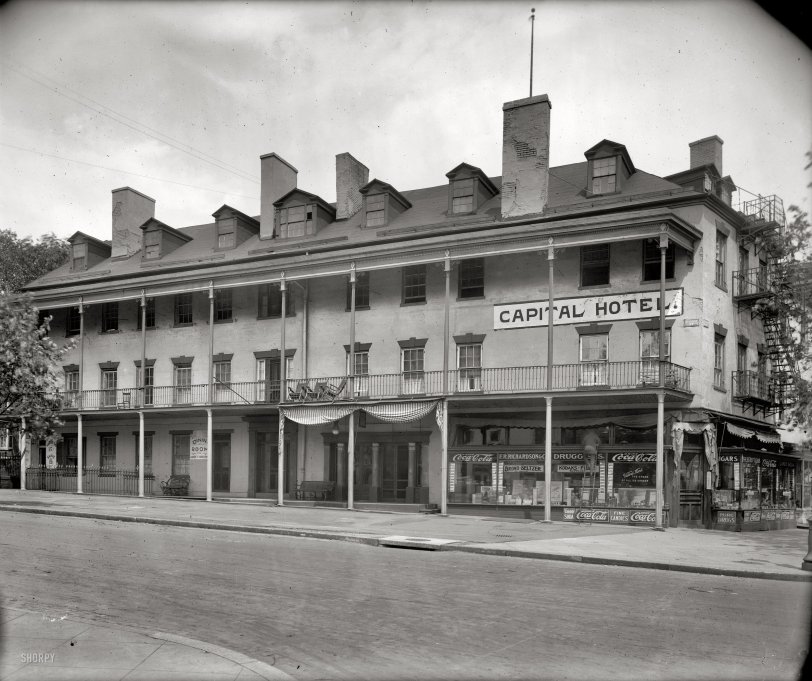
Originally the St. Charles Hotel, Washington, D.C., circa 1920. "Old Capital Hotel, 3rd and Pennsylvania N.W." When the place was torn down in 1926, the sign had changed from "Capital" to "Capitol."
As reported by The New York Times, "The Closing of a Circle," by FRANCIS X. CLINES, 19 January 2009 -- There are unsettling ghosts of America past all about the National Mall. Hundreds of thousands of people will gather there Tuesday for the inauguration of the nation’s first African-American president. Three blocks from where Barack Obama takes the oath, there was once the Saint Charles Hotel, a popular accommodation on Pennsylvania Avenue before emancipation ruined business for slave traders. It proudly advertised that down below its first-rate restaurant, guests could avail themselves of six, 30-foot-long arched slave cells, replete with wall rings and shackles. The management promised: “In case of escape, full value for the Negro will be paid.”
A few blocks from there was the notorious Yellow House, a three-story brick slave market where trader William Williams prospered enough to purchase two slave ships of his own. Solomon Northrup, a free man from New York who was kidnapped into slavery, passed through on the block and eventually wrote a memoir. He recalled how “the voices of patriotic representatives boasting of freedom and equality,” in the nearby Capitol almost commingled with “the rattling of the poor slave’s chains.”
Mr. Holland found that while the city had a mere 3,100 slaves of its own on the eve of the Civil War, it was an ideal trading platform for slaves bartered Southward by the scores of thousands. The Mall teemed not with tourists, but with pens and blocks “perfect for the sale of human beings,” he writes in his book, “Black Men Built the Capitol.” Black men also helped build the White House, as entrepreneurial masters profited from leasing slaves to the government.
“The inauguration will be the closing of a circle,” says Mr. Holland, more knowledgeable than most Americans about some of the cruel and inspiring ways history can work. His research establishes a singular path between today’s inauguration march and a trek from Robey’s Slave Pen and Tavern (where the Department of Education now sits) for sale and shipment South. “A drove consisting of males and females chained in couples,” a newspaper noted of slaves routinely herded from Robey’s through the heart of Washington. (source: The New York Times)

No comments:
Post a Comment